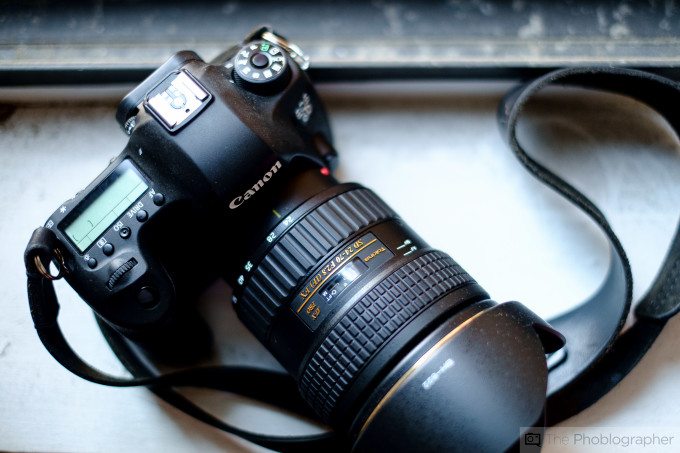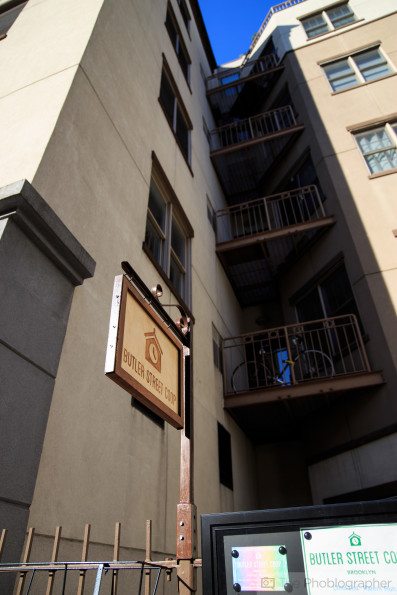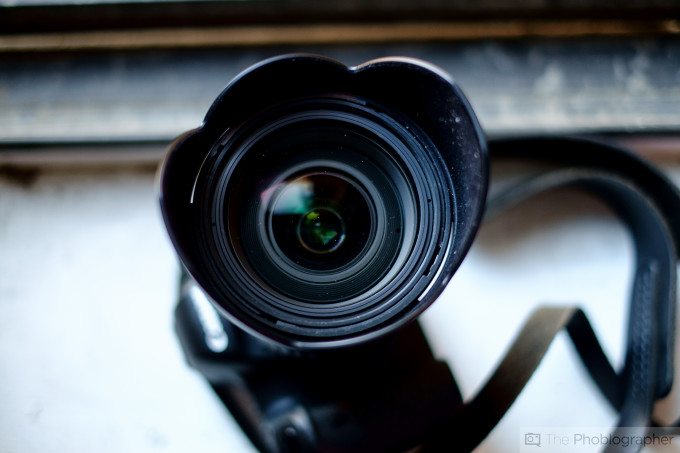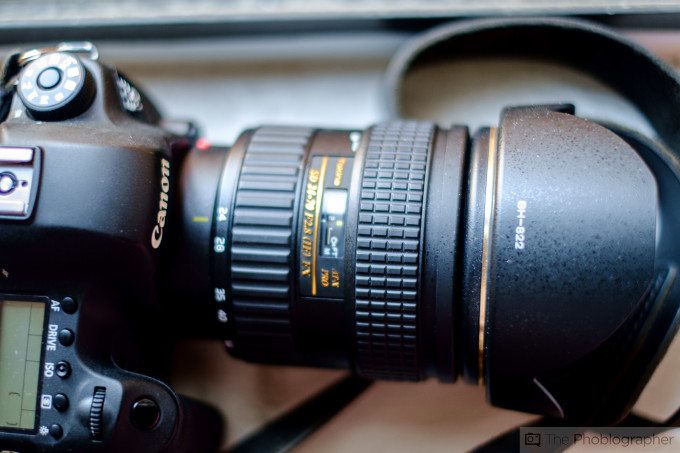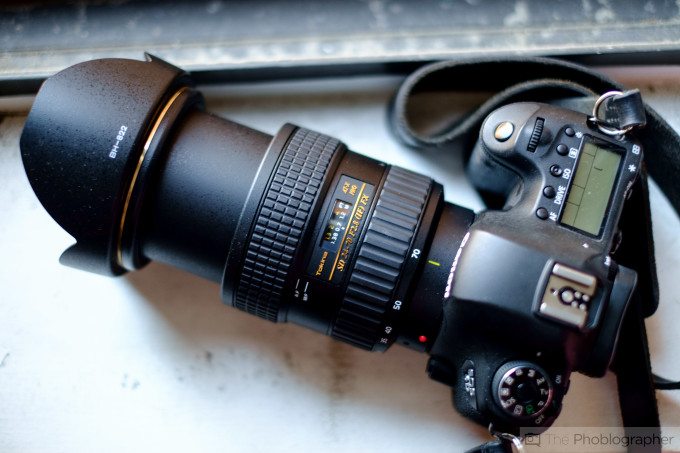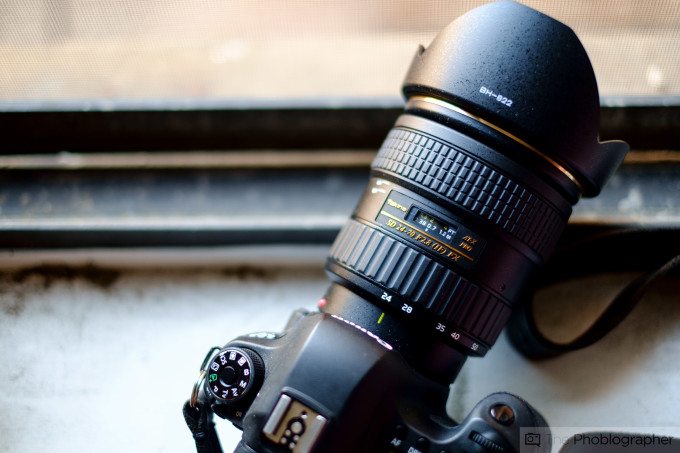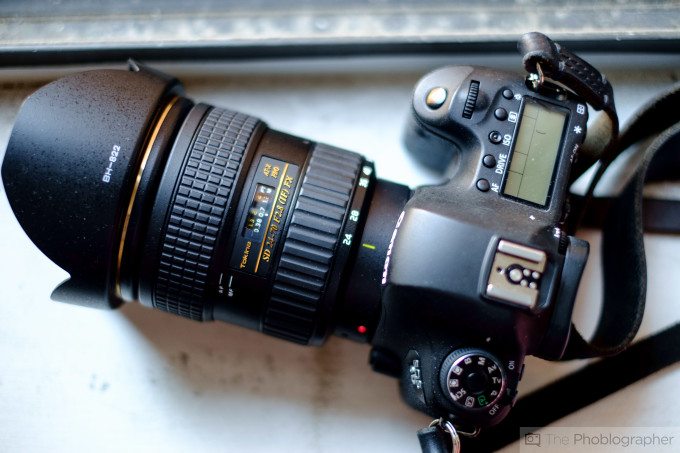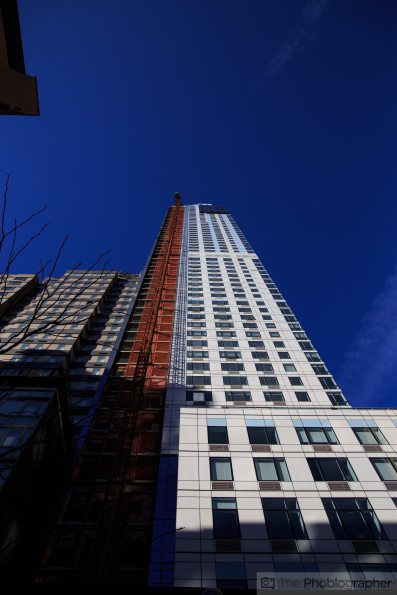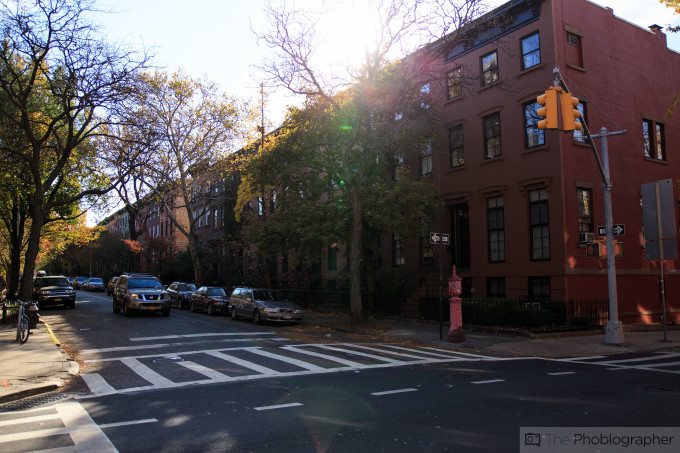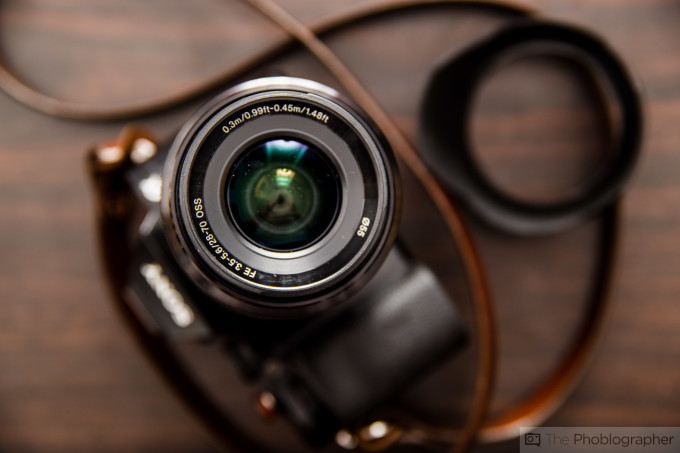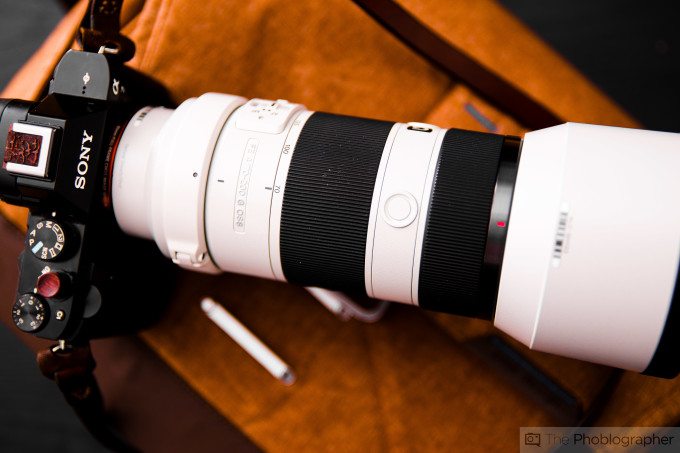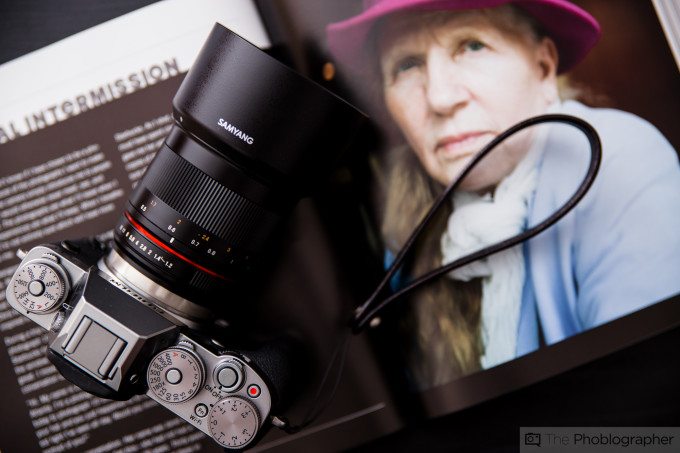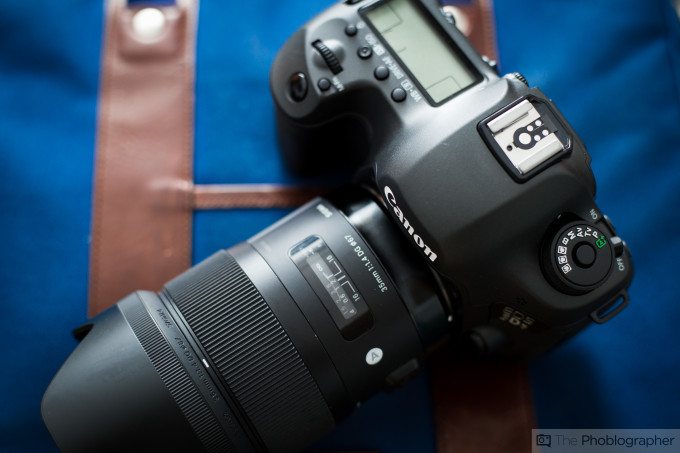Last Updated on 11/17/2015 by Chris Gampat
“Man, this lens is so sharp that holding it made me cut myself. And so I bled out onto the curb in Downtown Brooklyn and I needed to go to the hospital. And then the cop who picked up the lens afterward was also cut. The cutting; it just didn’t stop because the lens was just so sharp.”
That’s basically a conversation that I had with former Phoblographer staffer now TechRadar Laptop Editor Kevin Lee Sunday as we strolled around Brooklyn at 10AM. But seriously, the Tokina AT-X 24-70mm f2.8 Pro FX lens is highly capable of rendering incredibly sharp images and overall great color. But it also manages to have its own unique personality to its that doesn’t make the output look like anything Zeiss or Sigma releases.
Plus, it does it all for under $1,000.
Pros and Cons
Pros
- Very sharp image quality; it’s deceiving how sharp this lens is.
- Nice feel overall despite an antiqued exterior design
- 24mm is when the lens is its shortest and 70mm is when it’s the longest. This isn’t backwards the way it is with other 24-70mm offerings.
- Great color
- Pretty nice bokeh
Cons
- Autofocusing motor sounds like the brakes of a 10 year old Toyota Camry that have been way too abused and barely maintained.
Gear Used
The Tokina 24-70mm f2.8 was tested with the Canon 6D, the Interfit S1, and the Adorama Flashpoint Zoom Li-On flash.
Tech Specs
Tech specs on the taken taken from the B&H Photo listing for $999.
| Features | |
|---|---|
| Autofocus | Yes |
| Physical | |
|---|---|
| Filter Thread | 82 mm |
| Dimensions (DxL) | Approx. 3.53 x 4.23″ (89.6 x 107.5 mm) |
| Weight | 2.20 lb (1 kg) |
| Packaging Info | |
|---|---|
| Package Weight | 3.15 lb |
| Box Dimensions (LxWxH) | 7.5 x 6.3 x 6.1″ |
Ergonomics
The Tokina 24-70mm f2.8 is a fairly recent release, but in some ways it doesn’t really look the part. The front of the lens is characterized by a massive front element that requires an 82mm filter thread to protect it if you’re putting said filter on it. Then there is also the lens hood, which as a nice suede interior that’s very pleasant to run your fingers along.
The lens overall though is really characterized by three things: a massive focusing ring, a massive zoom ring, and a textured plastic exterior. This focusing ring can also be pulled back to enable manual focusing–which also reduces the need for a dedicated switch.
As the lens zooms into a subject, it becomes longer–which is how it’s supposed to work. Other 24-70mm lenses don’t necessarily do that.
Build Quality
In the hand, this lens feels very solid. Granted, it isn’t like Tamron, Zeiss or Sigma solid, but instead its own unique type that Tokina should be commended for. At the same time though, it doesn’t feel modern, but instead like something I’d hold which was made in the late 1990s or early 2000s. That doesn’t detract from the experience though, I tended to just use it as a lens and focus more on creating better images with it.
What’s really nice about this lens though is the push/pull manual focus ring that Tokina has always been known for. It makes the experience so much easier but it also means you need to be more careful about how you handle the lens lest you accidentally pull the ring back.
Ease of Use
Using this lens is very straightforward. If autofocus is enabled, then it will be as simple as focusing, shooting and being in awe of your photos. But if it’s disabled, you’re probably best off using the LCD screen unless you’ve got absolutely perfect vision. Unfortunately for me, I don’t.
Again, just be cautious of the manual focusing pump ring.
Autofocus
Okay, here’s where things get a bit more interesting…
First off, this is the loudest autofocus motor I’ve heard in years. If you think that the Fujifilm 35mm f1.4 is loud, then you haven’t heard this. Is it unbearable? No. Will it distract someone when you’re at a wedding and trying to photograph the ceremony? Maybe; that’s situational. You see, if the lens focuses directly onto the subject, then the sound is quick and over with. If the lens needs to scan a scene back and forth to acquire focusing, that’s when it starts to sound like a small mechanical pulley system with a motor that’s working way too hard.
Focusing in most situations though is accurate and I barely ever had any sort of misfocusing issues. In fact, the accuracy rating is just as high as Sigma’s. In contrast, it’s a tad slower to focus than anything Sigma has in its new Global Vision lineup.
If you’re not shooting weddings, then the AF motor really shouldn’t be a problem. But you’ll surely hear it the first time you focus the lens and be shocked by it.
Image Quality
EXIF DATA FOR THESE IMAGES HAVE BEEN LEFT IN TACT
Here is where this lens absolute and completely excels over any other 24-70mm f2.8 lens for DSLRs that I’ve seen thus far. When I photographed my friend’s cat in the image above, I wasn’t expecting the lens to be ridiculously stupid sharp; but indeed the lens renders results that are ridiculously stupid sharp. Granted, I photographed the cat with a flash in a giant umbrella so specular highlights were rendered and such–but that’s how you’re supposed to get the maximum sharpness from any lens anyway.
So before I get back into sharpness all over again, you should know that optically speaking, this may be the absolute best 24-70mm f2.8 lens that I’ve ever tested.
Sharpness
Man, oh man.
Even when you use this lens without a flash you’ll still be able to render some absolutely crazy sharpness that I’ve only ever seen from Sigma, Zeiss, and Sony if we’re talking about optics designed for full frame 35mm sensors. It’s astonishing and incredibly deceiving.
Why deceiving? Well, the Canon 6D doesn’t render images to be the sharpest on the LCD screen. Bring it into a computer though and you’ll be rubbing your eyes in disbelief.
No, really–other manufacturers should make full frame zoom lenses like this.
Bokeh
Generally, you won’t get a ton of bokeh from this lens at the wider end because of what it is: a wide angle lens at f2.8. However, what you get walks the line between hazy and creamy. Overall, it’s very nice and very beautiful to look at.
At the longer end though, you’ll get significantly better bokeh that you’ll be very proud of. If you want better bokeh, you’ll genuinely just need to pick up a prime lens in one of these focal lengths. Part of this has to do with the 9 aperture blade design.
Color Rendition
Colors from this lens tend to be rendered a bit warm; and if you’re dealing with skin tones that usually fine. Other colors overall are very vibrant. We’re talking Sigma levels of saturation here but without as much contrast.
Color Fringing
During the testing period, no real fringing was created that would ruin my day. Is it there? Yes. Can it be removed in Lightroom easily? Heck yes.
Moving on…
Extra Image Samples
Conclusions
Likes
- Amazing image quality
- Pretty affordable price
Dislikes
- Body could use a modern update
- I got used to the focus motors, but they should never have been so loud to begin with.
The Tokina 24-70mm f2.8 is a really fantastic lens if you’re a professional that doesn’t need weather sealing or even if you’re a high end hobbyist/semi-pro. There is lots of love about it. The image quality it can deliver is something that other manufacturers should be looking at closely as I usually tend to be much more critical of zoom lenses since so much can possibly go wrong with their design.
But this one: this one is marvelous.
If you can get over the loud focusing motors and the antiquated body design, you’ll have yourself a lens that you’ll truly love.
The Tokina 24-70mm f2.8 receives five out of five stars. It doesn’t get the site’s Editor’s Choice award because the exterior design needs to be modernized. Want one? Check out the Amazon listing for current pricing and availability.
Recommended Cameras
Canon 5DS: This camera will take the absolute best advantage of this lens’s sharpness. It’s like they were made for one another.


